#yoga citta
Explore tagged Tumblr posts
Text
What is Yoga?
By Lauren Tober | May 9, 2019 | Yoga + Meditation
When I tell people I teach iRest Meditation, they often ask me if I teach yoga as well.
The answer is YES! iRest Meditation IS yoga.
But I understand the confusion. While yoga is an ancient contemplative practice, it’s also a multi-million dollar industry that largely promotes advanced physical postures and a skinny body as the ultimate goal of yoga. But yoga is more than just downward dogs and sun salutations.
Commentaries of the meaning of the word yoga vary from union, to attaining what was previously unattainable, to directing all our focus on the activity in which we’re engaged, to being one with the divine.¹

Patañjali’s Yoga Sūtras
The meaning of yoga is presented concisely in the Patañjali’s Yoga Sūtras, a text that is considered by many to be the heart of yoga.¹
While little is known about Patañjali, it is widely accepted that he was an authority on yoga, and complied and systemised the vedic knowledge of the time into sūtras that could be handed down orally from teacher to student, in a concise way that would make it possible to remember. It is estimated that Patañjali wrote the sūtras around the second century C.E. and that Vyāsa wrote the original commentary on the sūtras, Yoga-Bhâshya, around the fifth century C.E.²
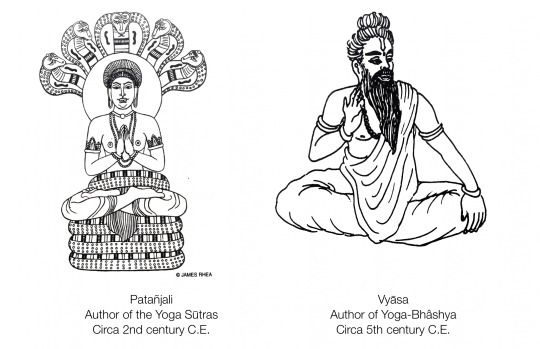
Yogaś Citta Vṛtti Nirodhaḥ
Patanjali’s answer to this question ‘what is yoga?’, is in chapter one, verse two of the Yoga Sūtras:
yogaś citta vṛtti nirodhaḥ (I.2)
Different commentators have interpreted this sutra in subtly different ways.
T.K.V. Desikachar wrote:
“Yoga is the ability to direct the mind exclusively toward an object and sustain that direction without any distractions.”⁴
B.K.S. Iyengar wrote:
“Yoga is the cessation of movements in the consciousness.”⁵
Edwin F. Bryant wrote:
“Yoga is the stilling of the changing states of mind.”⁶
Georg Feuerstein wrote:
“Yoga is the restriction of the whirls of consciousness.”⁷
Judith Hanson Laster wrote:
“Yoga is the state in which the agitations of consciousness are resolved.”⁸
Richard Miller wrote:
“Yoga is when we knowingly live as the realization of unconditioned Stillness, whether thought is in movement or stillness.”⁹
However you interpret this most influential sūtra about the meaning of yoga, it’s clear that the yoga is related to understanding the mind, and has nothing at all to do with having a slim and flexible body that looks sexy in expensive lycra leggings.
REFERENCES
Desikachar, T.K.V. (1995). The Heart of Yoga. Rochester, Vermont, US: Inner Traditions International.
Feuerstein, Georg. (2002). The Yoga Tradition. Delhi, India: Bhavana Books and Prints.
Feuerstein, Georg. (2002). The Yoga Tradition. Delhi, India: Bhavana Books and Prints (p.311)
Desikachar, T.K.V. (1995). The Heart of Yoga. Rochester, Vermont, US: Inner Traditions International (p.149).
Iyengar, B.K.S. (2002). Light on the Yoga Sūtras of Patañjali. London, UK: Thorsons (p.50).
Bryant, Edward. (2009). The Yoga Sūtras of Patañjali. New York, US: North Point Press (p.10).
Feuerstein, Georg. (2002). The Yoga Tradition. Delhi, India: Bhavana Books and Prints (p. 286).
Lasater, Judith Hanson. (2014). The Ten Most Important Sutras.
Miller, Richard. (2013). Level 1 Training Integrative Restoration (version 4.6c). San Rafael, CA, US: Anahata Press (p. xxiii).
#yoga#lord shiva#yoga citta#asana#kundalini#hatha#ashtangavinyasa#mind over matter#patanjali#ilyengar#vyasadeva#yogeshwar
4 notes
·
View notes
Text

divination
* * * *
Patanjali, in his classic work on yoga, formulates in his first sentence the practical and theoretical essence of yoga—the “first arcanum” or the key of yoga—as follows: Yoga citta vritti nirodha (Yoga is the suppression of the oscillations of the mental substance, Yoga Sutras 1.2) —or, in other terms, the art of concentration. For the “oscillations” (vritti) of the “mental substance” (citta) take place automatically. This automatism in the movements of thought and imagination is the opposite of concentration. Now, concentration is only possible in a condition of calm and silence, at the expense of the automatism of thought and imagination.
[Meditations on the Tarot: A Journey into Christian Hermeticism
by Valentin Tomberg]
#divination#Patanjali#Meditations on the Tarot: A Journey into Christian Hermeticism#Valentin Tomberg#yoga#the mind#quotes
45 notes
·
View notes
Text
Analisando o Laghu-Yoga-Vasistha
(Este trecho analisa uma citação do Laghu no contexto de Advaita Vedanta. Para informações básicas sobre o livro, clique aqui. Para a tag geral do Laghu, clique aqui.)
Quando, assim como o vento encena o poder pulsante da vibração (spanda-śakti), o eu (ātman), inteiramente por si só, de repente encena um poder (śakti) chamado “desejo/imaginação” (saṃkalpa), então [este] eu do mundo, fazendo-se como se estivesse na forma de uma aparência discreta (ābhāsa) que abunda no impulso em direção ao desejo/imaginação (saṃkalpa), torna-se mente (manas). Este mundo, que é apenas puro desejo/imaginação (saṃkalpa-mātra), desfrutando da condição de ser visto (dṛśya), não é real (satyam) nem falso (mithyā), ocorrendo como a armadilha de um sonho.
Abhinanda afirma aqui que o Ser/consciência puro sofre a aparência (ābhāsa) de uma transformação, mas sem suportar nenhuma transformação real, pois o poder da pulsação do ātman (spanda) o faz se manifestar “como se” em uma nova forma ou aparência, a saber, os objetos do mundo fenomenal. Agora, ābhāsa é um termo empregado tanto pelos Śaivas não-dualistas da Caxemira quanto pelos Advaitins, além de várias outras tradições sânscritas: as escolas budistas Yogācāra (e, em menor grau, Madhyamaka) foram talvez as primeiras a desenvolver o conceito em detalhes, enfatizando os ābhāsas do mundo como, de fato, falsas aparências, construídas pela mente (citta), que os dota com a aparência de substancialidade objetiva, quando na realidade tais objetos são apenas “vazios” (śūnya) ou “somente mente” (citta-mātra). Não pode haver dúvidas de que essas primeiras valências budistas do termo ābhāsa persistem na literatura Yoga-Vāsiṣṭha, que nunca se cansa de afirmar enfaticamente o mundo fenomenal como a construção de nossas próprias mentes (manas, citta) e nossas imaginações cognitivas (kalpa, saṃkalpa, vikalpa); de fato, o texto ecoa explicitamente o vocabulário budista do mundo como “somente mente” (manomātra, citta-mātra) em repetidas ocasiões. Por exemplo: “tudo o que surge é [apenas] a mente, como uma cidade nas nuvens. Tudo isso que aparece, uma autoexpansão chamada ‘o mundo’ (jagat), não é mais do que erro (bhrānti);” “este mundo inteiro é somente mente (manomātra) . . . a mente é o céu, a terra, o vento. De fato, a mente é grande;” “tudo isso é a mente (manas) que brilha (sphurati) dentro de [suas] criações (sṛṣṭi).”
Similarmente, a implantação do Advaita Vedānta de ābhāsa também enfatiza a “aparência” do mundo como, de fato, a falsa aparência (bhrānti) de um mundo imaginado, o produto da ignorância (avidyā) que não possui nenhuma realidade substancial própria. Talvez a diferença central entre os usos budistas e advaitianos do termo, no entanto, seja que, enquanto as invocações budistas de ābhāsa são primariamente destinadas a provocar um reconhecimento da natureza efêmera e dependente da mente dos objetos fenomenais, o Advaita acrescenta algo mais ao relato: uma vez que as semelhanças fenomenais são reconhecidas como ilusórias, o terreno é limpo para o reconhecimento de uma entidade adicional que é, em última análise, real, “escondendo-se atrás” dessas falsas aparências o tempo todo, a saber, o Eu puro (ātman) ou Realidade absoluta (brahman). Às vezes, o Laghu também habita um modo semelhante, varrendo o transitório e efêmero para deixar apenas o absoluto como remanescente, por exemplo: “todas essas coisas móveis e imóveis do mundo… são destruídas como um sonho é destruído em um sono profundo e sem sonhos (suṣupti). Então, um certo ser permanece que é imóvel, profundo, nem luz nem escuridão, onipresente, imanifesto, sem nome. Para os propósitos práticos da fala (vyavahārārthaṃ), o nome desse eu exaltado (ātman) é imaginado pelos sábios como ‘verdade/ordem cósmica’ (ṛta), ‘ātman’, ‘o Altíssimo’, ‘brahman’, ‘realidade’ (satyam), e assim por diante.”
E assim, para o Advaita Vedānta, as “semelhanças” (ābhāsas) que constituem os objetos do mundo fenomenal são, na melhor das hipóteses, meramente convencionalmente reais (vyāvahārika), mas não em última análise (pāramārthika), sendo ātman a única Realidade última; em vários momentos, o Laghu fica feliz em ecoar mais ou menos esse relato. Além disso, a insistência do Advaita Vedānta de que a Realidade/Eu último (brahman/ātman) é desprovida de toda mudança e transformação significa que essas falsas semelhanças do mundo não podem ser diretamente fundamentadas no imutável brahman, mas sim, devem ser fundamentadas na “ignorância” (avidyā). Agora, a ignorância em si é apenas tenuamente conectada com brahman, um pouco como luz e sombra, sendo a luz (brahman) aquilo que imediatamente destrói a sombra da ignorância ao contato. Portanto, os Advaitins predominantemente descrevem os dois como muito mais opostos do que relacionados; ābhāsas, portanto, não “vêm” realmente de brahman, por esse motivo, mas são, em vez disso, instanciações e produtos do oposto de brahman, a ignorância. Para os Śaivas da Caxemira não dualistas, em contraste, a noção de ābhāsa é empregada para um efeito notavelmente divergente: com a adoção de um “absoluto infinito que se manifesta ativamente por meio da finitude e transitoriedade dos fenômenos que mudam perpetuamente em consonância com a atividade do absoluto” — isto é, os “pulsos” ou “vibrações” (spanda) da Consciência pura — o resultado é uma concepção de ābhāsa “não… no sentido [Advaitin] de semelhança, mas como a forma manifesta do absoluto”, em outras palavras, menos como a relação entre luz e sombra, e mais como a relação entre o sol e os vários raios individuais que se espalham a partir dele. Nesta visão de Kashmiri Śaiva, há, portanto, uma continuidade ontológica muito mais pronunciada — na verdade, uma identidade — entre aparência e Realidade, uma percepção que a literatura Yoga-Vāsiṣṭha fica muito feliz em ecoar em repetidas ocasiões: “Aquele que considera a multidão de raios como sendo distinta do sol, para ele, essa multidão é de fato algo diferente do sol… [mas] aquele que considera os raios como sendo indistintos do sol, para ele, esses raios são [o mesmo que] o sol. Ele (ou seja, o último) é dito ser desprovido de dúvida;” “assim como a multiplicidade abundante, espalhando-se como ondas e semelhantes, aparece no oceano flutuante sem ser distinta dele… da mesma forma, este [mundo] abundante e multitudinário — que é consciência sozinha e indistinto dela — se manifesta no oceano da consciência;” “‘o mundo (jagat) é, de fato, brahman’, desta forma, todo este [mundo] é conhecido através do conhecimento da realidade (sattva).” O Laghu, consequentemente, em alguns momentos habita a concepção Advaitin de ābhāsas como fugazmente irreal como um sonho evanescente, e, em outros momentos, incorpora uma insistência semelhante à de Kashmir Śaiva nas aparências do mundo como as epifanias reveladoras da consciência pura.
Translating Wisdom: Hindu-Muslim Intellectual Interactions in Early Modern South Asia- Shankar Nair
#laghu yoga-vasistha#hinduismo#budismo#traducao-en-pt#translatingwisdom-sn#advaita vedanta#vedanta#sânscrito#shivaísmo#caxemira#abhasa#brahman#atman#cctranslations
0 notes
Text

“ VRITTI “ as per The Yoga Sutras of Patanjali: Mindfulness in Every Weave
In the Yoga Sutras of Patanjali, Vritti refers to the fluctuations of the mind. “Yogaś citta-vritti-nirodhaḥ” means silencing these fluctuations to achieve a state of calm.
At Vritti Designs, we integrate this philosophy into our work, fostering mindfulness and precision in every creation. By providing a source of livelihood to rural artisans, we help them achieve stability and serenity in their lives, much like calming the mind’s ripples.
#VrittiDesigns#YogaSutras#Mindfulness#Handcrafted#SupportArtisans#SustainableDesign#CulturalHeritage#YogaCommunity#MindfulLiving#ArtisanWellness
1 note
·
View note
Text
Within the Yoga Sutra Patañjali offers numerous lists which can reflect nuances or gradings...
Within the four chapters of the Yoga Sutra Patañjali offers numerous lists which can reflect nuances or gradings. Sometimes they are presented in shades of gross to subtle, as in the four Samāpatti, or at other points subtle to gross, as in the five Kleśa. At other points, they can mark transitions from more external perceptive processes to more internal perceptive processes, as in the five Citta…
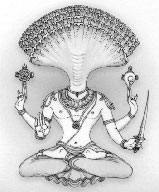
View On WordPress
1 note
·
View note
Text
Combined Guide for Growth
This guide merges teachings from four spiritual traditions: Tanya (Judaism), Thirumanthiram (Shaivism), Yoga Sutras (Hinduism), and the Heart Sutra (Buddhism). While they differ in origin and specifics, they share core ideas for spiritual growth.
1. The Duality Within:
Tanya & Thirumanthiram: Both acknowledge the internal struggle between the Divine Soul (Tanya) or Sattvic guna (Yoga Sutras) and the Animal Soul (Tanya) or Tamasic guna (Yoga Sutras).
Heart Sutra: While not explicitly dualistic, it recognizes the clinging to self (ahamkara) as an obstacle to enlightenment.
2. The Path to Liberation:
Tanya & Yoga Sutras: Emphasize practices like self-discipline, ethical conduct (Yamas & Niyamas), and reason to overcome desires and negativity.
Thirumanthiram: Advocates for Yoga (including Hatha Yoga and Bhakti Yoga) as a path to liberation (moksha).
Heart Sutra: Points towards Prajna (wisdom) and emptiness (shunyata) as the path to liberation.
3. The Role of the Mind:
Tanya: Highlights the importance of Teshuva (repentance) and self-awareness to purify the mind.
Yoga Sutras: Focuses on quieting the fluctuations of the mind (citta vritti) through practices like meditation (dhyana).
Heart Sutra: Emphasizes the concept of "no mind" (wu xin) to transcend illusion and suffering.
4. The Power of Love and Devotion:
Tanya: Love for God is a central theme, motivating good deeds (Mitzvot).
Thirumanthiram: Bhakti Yoga (devotion to Shiva) is seen as a path to liberation.
Heart Sutra: While not emphasizing a personal God, the Heart Sutra suggests a deep connection with the ultimate reality.
5. Integration into Daily Life:
Tanya: Encourages integrating spiritual practices like Torah study into daily activities.
Yoga Sutras: The Yamas and Niyamas (ethical principles) guide moral conduct in everyday life.
Heart Sutra: The wisdom gained from the Heart Sutra can be applied to navigate daily challenges with compassion.
Remember:
This is a simplified overview, and each tradition offers rich philosophical and practical guidance.
Explore the original sources or teachings from qualified teachers for a deeper understanding.
Additional Points:
Tanya: Focuses on the importance of studying Torah and the concept of the Yetzer Hara (evil inclination).
Thirumanthiram: Explores the concept of Kundalini and the significance of mantras.
Yoga Sutras: Offers a comprehensive framework for achieving yoga (union) through various yogic practices.
Heart Sutra: Focuses on the concept of emptiness (shunyata) and the interconnectedness of all thing
0 notes
Text
youtube
IKS at Plaksha | Raghu Ananthanarayanan
Sri Raghu Anantanarayanan (Rtambhara Ashram, Kotagiri) discussed Citta Vidya as psychology in the light of Yogic wisdom. After defining Citta Vidya as a confluence of the Yoga Sūtra-s, Itihāsa-purāṇa, Theatre and Dance, he observed that Citta Vidya emphasizes introspection and sādhanā as the key to personal transformation, while Euro-American Psychology emphasizes outside-in therapy as the key to transformation.
#RaghuAnantanarayanan#PlakshaIKS#CittaVidya#YogicWisdom#PersonalTransformation#Introspection#Youtube
0 notes
Text
What are Mudras in Yoga? A mudra is a gesture or seal used in yoga. The practice of these gestures and seals channel the flow of prana life force. There are many mudras. They are categorized as hand hasta mudras, body (kaya) and consciousness (citta) mudras. We commonly use hand mudras.
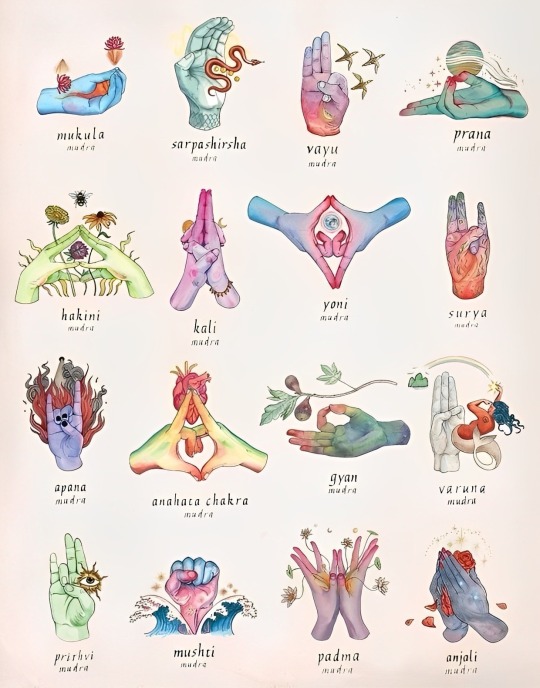
Yog Mudra
34 notes
·
View notes
Text
కపిల గీత - 180 / Kapila Gita - 180

🌹. కపిల గీత - 180 / Kapila Gita - 180 🌹 🍀. కపిల దేవహూతి సంవాదం 🍀 📚. ప్రసాద్ భరధ్వాజ 🌴 4. భక్తి యోగ లక్షణములు మరియు సాధనలు - 34 🌴 34. ఏవం హరౌ భగవతి ప్రతిలబ్ధభావో భక్త్యా ద్రవద్ధృదయ ఉత్పులకః ప్రమోదాత్ ఔత్కణ్ఠ్యబాష్పకలయా ముహురర్ద్యమానస్ తచ్చాపి చిత్తబడిశం శనకైర్వియుఙ్క్తే॥
తాత్పర్యము : ఈ విధముగా ధ్యానాభ్యాసము చేయుటవలన సాధకునకు శ్రీహరియందు పరిపూర్ణ భక్తి ఏర్పడును. దాని ప్రభావమున అతని హృదయము ఆర్ద్రమగును. ఆనందాతిరేకముచే తనువు పులకించును. ఉత్కంఠవలన కలిగిన అశ్రుధారలచే మాటిమాటికిని అతని దేహము తడిసిపోవును.చేపలను ఆకర్షించు గాలమువలె శ్రీహరిని తనవైపు మరల్చుకొనుటకు సాధనమైన చిత్తమునుగూడ తిన్నతిన్నగా ధ్యేయవస్తువునకు దూరమొనర్చును. ఈ స్థితిలో ద్యాత, ధ్యానము, ధ్యేయము అను త్రిపుటి ఉండదు. భగవంతుడు ఒక్కడే మిగిలి యుండును. అనగా భక్తుడు భగవంతునిలో ఏకీభావస్థితిని పొందును.
వ్యాఖ్య : మనస్సు యొక్క చర్య అయిన ధ్యానం సమాధి లేదా శోషణ యొక్క పరిపూర్ణ దశ కాదని ఇక్కడ స్పష్టంగా పేర్కొనబడింది. ఆదిలో మనస్సు భగవంతుని స్వరూపాన్ని ఆకర్షించడంలో పని చేస్తుంది, కానీ ఉన్నత దశలలో మనస్సును ఉపయోగించుకునే ప్రశ్నే ఉండదు. ఒక భక్తుడు తన ఇంద్రియాలను శుద్ధి చేసుకోవడం ద్వారా పరమేశ్వరుని సేవించడం అలవాటు చేసుకుంటాడు. మరో మాటలో చెప్పాలంటే, ఒక వ్యక్తి స్వచ్ఛమైన భక్తి సేవలో లేనంత వరకు ధ్యానం యొక్క యోగ సూత్రాలు అవసరం. ఇంద్రియాలను శుద్ధి చేయడానికి మనస్సు ఉపయోగించ బడుతుంది, కానీ ధ్యానం ద్వారా ఇంద్రియాలు శుద్ధి చేయబడినప్పుడు, ఒక నిర్దిష్ట ప్రదేశంలో కూర్చుని భగవంతుని స్వరూపాన్ని ధ్యానించడానికి ప్రయత్నించాల్సిన అవసరం లేదు. ఒక వ్యక్తి స్వయంచాలకంగా భగవంతుని వ్యక్తిగత సేవలో నిమగ్నమయ్యేంత అలవాటు పడిపోతాడు. భగవంతుని స్వరూపంపై మనస్సు బలవంతంగా నిమగ్నమైనప్పుడు, యోగి స్వయంచాలకంగా భగవంతుని వ్యక్తిగత సేవలో నిమగ్నమవ్వడు కాబట్టి దీనిని నిర్బీజ-యోగ లేదా నిర్జీవ యోగా అంటారు. కానీ అతను నిరంతరం భగవంతుని గురించి ఆలోచిస్తున్నప్పుడు, దానిని సబీజ-యోగ లేదా జీవన యోగా అంటారు. జీవన యోగా వేదికగా ఒకరు పదోన్నతి పొందాలి.
సశేషం..
🌹 🌹 🌹 🌹 🌹
🌹 Kapila Gita - 180 🌹 🍀 Conversation of Kapila and Devahuti 🍀 📚 Prasad Bharadwaj 🌴 4. Features of Bhakti Yoga and Practices - 34 🌴 34. evaṁ harau bhagavati pratilabdha-bhāvo bhaktyā dravad-dhṛdaya utpulakaḥ pramodāt autkaṇṭhya-bāṣpa-kalayā muhur ardyamānas tac cāpi citta-baḍiśaṁ śanakair viyuṅkte
MEANING : By following this course, the yogī gradually develops pure love for the Supreme Personality of Godhead, Hari. In the course of his progress in devotional service, the hairs on his body stand erect through excessive joy, and he is constantly bathed in a stream of tears occasioned by intense love. Gradually, even the mind, which he used as a means to attract the Lord, as one attracts a fish to a hook, withdraws from material activity.
PURPORT : Here it is clearly mentioned that meditation, which is an action of the mind, is not the perfect stage of samādhi, or absorption. In the beginning the mind is employed in attracting the form of the Supreme Personality of Godhead, but in the higher stages there is no question of using the mind. A devotee becomes accustomed to serving the Supreme Lord by purification of his senses. In other words, the yoga principles of meditation are required as long as one is not situated in pure devotional service. The mind is used to purify the senses, but when the senses are purified by meditation, there is no need to sit in a particular place and try to meditate upon the form of the Lord. One becomes so habituated that he automatically engages in the personal service of the Lord. When the mind forcibly is engaged upon the form of the Lord, this is called nirbīja-yoga, or lifeless yoga, for the yogī does not automatically engage in the personal service of the Lord. But when he is constantly thinking of the Lord, that is called sabīja-yoga, or living yoga. One has to be promoted to the platform of living yoga.
Continues...
🌹 🌹 🌹 🌹 🌹
0 notes
Text
కపిల గీత - 180 / Kapila Gita - 180

🌹. కపిల గీత - 180 / Kapila Gita - 180 🌹 🍀. కపిల దేవహూతి సంవాదం 🍀 📚. ప్రసాద్ భరధ్వాజ 🌴 4. భక్తి యోగ లక్షణములు మరియు సాధనలు - 34 🌴 34. ఏవం హరౌ భగవతి ప్రతిలబ్ధభావో భక్త్యా ద్రవద్ధృదయ ఉత్పులకః ప్రమోదాత్ ఔత్కణ్ఠ్యబాష్పకలయా ముహురర్ద్యమానస్ తచ్చాపి చిత్తబడిశం శనకైర్వియుఙ్క్తే॥
తాత్పర్యము : ఈ విధముగా ధ్యానాభ్యాసము చేయుటవలన సాధకునకు శ్రీహరియందు పరిపూర్ణ భక్తి ఏర్పడును. దాని ప్రభావమున అతని హృదయము ఆర్ద్రమగును. ఆనందాతిరేకముచే తనువు పులకించును. ఉత్కంఠవలన కలిగిన అశ్రుధారలచే మాటిమాటికిని అతని దేహము తడిసిపోవును.చేపలను ఆకర్షించు గాలమువలె శ్రీహరిని తనవైపు మరల్చుకొనుటకు సాధనమైన చిత్తమునుగూడ తిన్నతిన్నగా ధ్యేయవస్తువునకు దూరమొనర్చును. ఈ స్థితిలో ద్యాత, ధ్యానము, ధ్యేయము అను త్రిపుటి ఉండదు. భగవంతుడు ఒక్కడే మిగిలి యుండును. అనగా భక్తుడు భగవంతునిలో ఏకీభావస్థితిని పొందును.
వ్యాఖ్య : మనస్సు యొక్క చర్య అయిన ధ్యానం సమాధి లేదా శోషణ యొక్క పరిపూర్ణ దశ కాదని ఇక్కడ స్పష్టంగా పేర్కొనబడింది. ఆదిలో మనస్సు భగవంతుని స్వరూపాన్ని ఆకర్షించడంలో పని చేస్తుంది, కానీ ఉన్నత దశలలో మనస్సును ఉపయోగించుకునే ప్రశ్నే ఉండదు. ఒక భక్తుడు తన ఇంద్రియాలను శుద్ధి చేసుకోవడం ద్వారా పరమేశ్వరుని సేవించడం అలవాటు చేసుకుంటాడు. మరో మాటలో చెప్పాలంటే, ఒక వ్యక్తి స్వచ్ఛమైన భక్తి సేవలో లేనంత వరకు ధ్యానం యొక్క యోగ సూత్రాలు అవసరం. ఇంద్రియాలను శుద్ధి చేయడానికి మనస్సు ఉపయోగించ బడుతుంది, కానీ ధ్యానం ద్వారా ఇంద్రియాలు శుద్ధి చేయబడినప్పుడు, ఒక నిర్దిష్ట ప్రదేశంలో కూర్చుని భగవంతుని స్వరూపాన్ని ధ్యానించడానికి ప్రయత్నించాల్సిన అవసరం లేదు. ఒక వ్యక్తి స్వయంచాలకంగా భగవంతుని వ్యక్తిగత సేవలో నిమగ్నమయ్యేంత అలవాటు పడిపోతాడు. భగవంతుని స్వరూపంపై మనస్సు బలవంతంగా నిమగ్నమైనప్పుడు, యోగి స్వయంచాలకంగా భగవంతుని వ్యక్తిగత సేవలో నిమగ్నమవ్వడు కాబట్టి దీనిని నిర్బీజ-యోగ లేదా నిర్జీవ యోగా అంటారు. కానీ అతను నిరంతరం భగవంతుని గురించి ఆలోచిస్తున్నప్పుడు, దానిని సబీజ-యోగ లేదా జీవన యోగా అంటారు. జీవన యోగా వేదికగా ఒకరు పదోన్నతి పొందాలి.
సశేషం..
🌹 🌹 🌹 🌹 🌹
🌹 Kapila Gita - 180 🌹 🍀 Conversation of Kapila and Devahuti 🍀 📚 Prasad Bharadwaj 🌴 4. Features of Bhakti Yoga and Practices - 34 🌴 34. evaṁ harau bhagavati pratilabdha-bhāvo bhaktyā dravad-dhṛdaya utpulakaḥ pramodāt autkaṇṭhya-bāṣpa-kalayā muhur ardyamānas tac cāpi citta-baḍiśaṁ śanakair viyuṅkte
MEANING : By following this course, the yogī gradually develops pure love for the Supreme Personality of Godhead, Hari. In the course of his progress in devotional service, the hairs on his body stand erect through excessive joy, and he is constantly bathed in a stream of tears occasioned by intense love. Gradually, even the mind, which he used as a means to attract the Lord, as one attracts a fish to a hook, withdraws from material activity.
PURPORT : Here it is clearly mentioned that meditation, which is an action of the mind, is not the perfect stage of samādhi, or absorption. In the beginning the mind is employed in attracting the form of the Supreme Personality of Godhead, but in the higher stages there is no question of using the mind. A devotee becomes accustomed to serving the Supreme Lord by purification of his senses. In other words, the yoga principles of meditation are required as long as one is not situated in pure devotional service. The mind is used to purify the senses, but when the senses are purified by meditation, there is no need to sit in a particular place and try to meditate upon the form of the Lord. One becomes so habituated that he automatically engages in the personal service of the Lord. When the mind forcibly is engaged upon the form of the Lord, this is called nirbīja-yoga, or lifeless yoga, for the yogī does not automatically engage in the personal service of the Lord. But when he is constantly thinking of the Lord, that is called sabīja-yoga, or living yoga. One has to be promoted to the platform of living yoga.
Continues...
🌹 🌹 🌹 🌹 🌹
1 note
·
View note
Photo
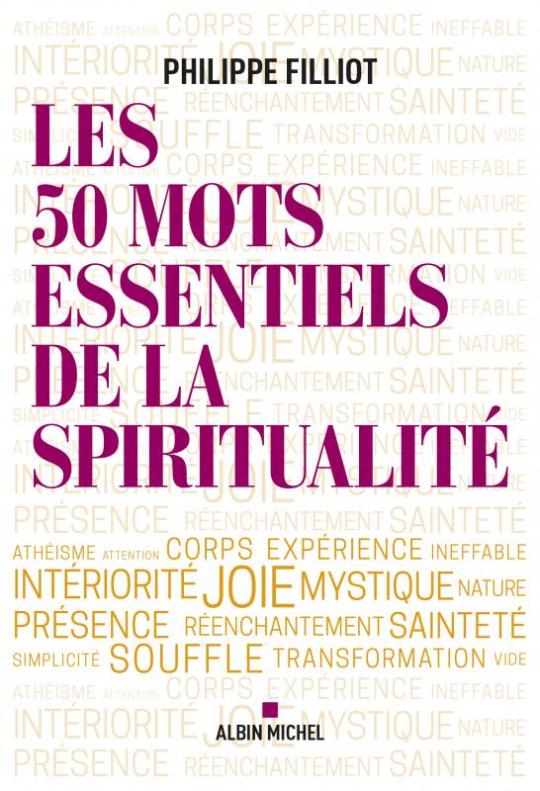
Coup de coeur pour le dernier livre de Philippe Filliot Les mots essentiels
Depuis sa thèse en Sciences de l'Education en 2011 (L'éducation au risque du spirituel, Desclée de Brouwer). Philippe Fillot trace un sillon doré dans le vaste champ, en fait peu moissonné, de la spiritualité. Il est cet élégant paysan érudit, qui toujours soupèse le grain, sépare les " mauvaises " herbes pour révéler la sentence, qui fera naître son prochain livre. Vous vous souvenez peut-être de ce petit livre bleu " être vivant, méditer, créer " paru en 2016 chez Actes Sud, où il envisageait l'expérience méditative comme la source de la création même, bien réelle. Car l'auteur préfère la compagnie des artistes et des poètes, des mystiques et des gens qui font aux beaux parleurs. Bien qu'il ait commis un livre sur le Viniyoga (2018, Almora), il se tient à bonne distance du yoga qu'il connaît bien, du yoga occidental, celui d'une simple quête hédoniste. Au fil des années, ce chercheur d'or approfondit le lien qu'il existe entre la vie et son mystère, entre la vie intérieure et le sens d'exister. C'est un filon sans fin dont il trouve les mots pour le dire. Aussi, dans son dernier livre, il en a choisi 50 qu'il cuisine aux petits oignons de son érudition et de sa sensibilité. La forme est bonne, plus poétique, qui l'éloigne du discours et l'autorise à dire tout et son contraire. Il est adepte, et on le comprend, du ni, ni. La vérité est ailleurs. Et au mot " engagement “, il s'enflamme, car la spiritualité est pour lui avant tout incarnée, ici et maintenant, dans cette société-là.
Source Journal du Yoga, numéro 237, avril 2022
Sur le site Citta Vritti : Philippe Filliot : “Je milite pour spiritualiser la raison et pour rationaliser la spiritualité”.
0 notes
Text
Relaxation - relaxation techniques
Taken from MMGore's book "Anatomy and physiology of yoga techniques"
In yoga it is directly related to awareness and has as its purpose the easing of tensions operating at the level of consciousness (citta).
It is known that mental tensions give rise to physical tensions in the muscles. These mental tensions are the result of both the stress due to the external environment and the internal processes of thought, which act on the muscles and nerves making them more tense. Muscle tension, in turn, impedes blood flow and is easily the cause of fatigue...
the relaxation
the shavasana posture favors both physical relaxation and mental relaxation on a conscious level, if they are practiced correctly and with the right mental attitude.
It should be kept in mind that this condition is not only a state of rest of the body and mind, but a conscious relaxation.
It is not a sluggish or sluggish state of mind: on the contrary, the mental relaxation of citta brings new energy to the person and enables him to cope with the tiring routine of work as well as the various stresses and strains of daily life. A constant practice of savasana is sufficient to keep the mind balanced and to prevent mental fatigue.
The horizontal position of the body, lying on the floor, facilitates blood circulation. No body system is engaged against gravity; for example, the flexor and extensor muscles can also relax, as there is no need to keep the body in balance by circling the force of gravity.
It requires some kind of training,
especially at the beginning of the practice, to loosen muscular tension and to engage the mind adequately, otherwise it is subjected to the processes of conscious thought which cause tension through memory, intellect and imagination.
By adopting a relaxing asana, it is easy to practice pranadharana, which consists in passively observing the act of breathing. The flow of air (which enters the lungs during inhalation and exits through the nostrils during exhalation) is perceived by the subject as if he were a "witness" as if he were observing another person.
This awareness of the breath also relaxes the body: the relaxation is all the more profound the more one forgets about the rest of the body itself and the external environment.
Various stages have been developed in the relaxation technique, according to the principle “from the lowest level to the most subtle and it is not so easy to reach. We therefore train progressively to withdraw our conscious attention from the more "gross" aspects of the body and to gradually develop awareness of the more "subtle" functions of the body and mind. e.g. , at a certain level of training, awareness of the contact of the air with the nostrils is developed,
Asana postural practice for:
Establish a condition of balance in the various systems of the body, with a view to harmonious functioning. This ensures that the individual has maximum energy on an organic level.
Train the nervous system (especially the autonomic nervous system) so that it can easily withstand the impact of spiritual energy (kundalini) when it is awakened.
induce a state of stability and mental peace, as well as a sense of well-being, and condition the various joints, muscles and tendons, so as to offer a stable and comfortable posture for the highest practices, such as pranayama, dharana, dhyana.
Mental characteristics and personality are closely related to postural condition. This means that every attitude of the body is connected with emotional or psychological factors that contribute to forming the personality.
Through long practice changes or corrections of behavior are necessarily induced, in a completely involuntary way, thanks to the modification of the basic tone. It is even possible that the whole view of one's existence is changed.
#namaste#abhyāsa#āsana#nyama#ginnastica evolutiva#ginnastica#moveflow#prana#satya#yama#yoga_nil#Essere_Yoga
0 notes
Text
108 Yoga Study Path Pointers – 41 – Krishnamacharya's Yoga Loom had three interwoven threads...
Krishnamacharya’s Yoga Loom had three interwoven threads. Namely, an appropriate application, according to, an individual’s specific needs, of: Kāya Cikitsā through Āyurveda, Prāṇa Śakti through Haṭha, Citta Adhyātmika through Rāja. Link to Series: 108 Yoga Study Path Pointers

View On WordPress
0 notes
Photo
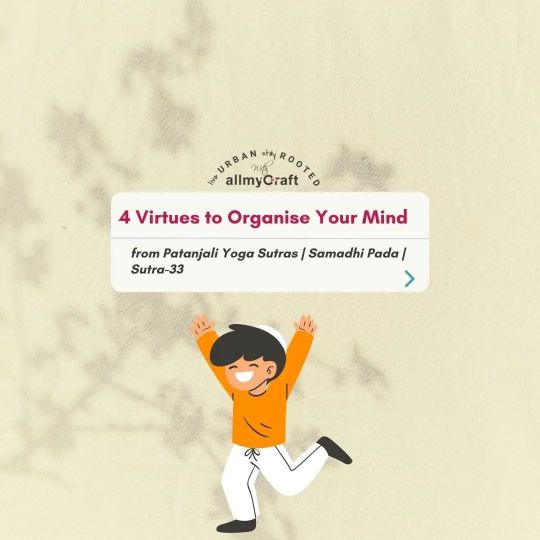
The essence of absolute #organisedmind is through the four Brahmavihāras, the four sublime attitudes, present both in the teachings of Buddhism and Yoga (as presented in Patañjali’s Yoga Sutra I.33) is as मैत्रीकरुणामुदितोपेक्षाणां सुखदुःखपुण्यापुण्यविषयाणां भावनातश्चित्तप्रसादनम्॥३३॥ maitrī karuṇā mudito-pekṣāṇāṁ-sukha-duḥkha puṇya-apuṇya-viṣayāṇāṁ bhāvanātaḥ citta-prasādanam ॥33॥ “The mind becomes clarified by cultivating attitudes of friendliness, compassion, gladness and indifference respectively towards happiness, misery, virtue and vice. I.33 #patanjaliyogasutras #brahmavihara #mudita #joy #justorganiseyourself #liveURBAN #stayROOTED #allmyCraft https://www.instagram.com/p/ConHDljSmGk/?igshid=NGJjMDIxMWI=
#organisedmind#patanjaliyogasutras#brahmavihara#mudita#joy#justorganiseyourself#liveurban#stayrooted#allmycraft
0 notes
Text
Desires are insatiable, says the Mahābhārata, and “there has never been, nor will there ever be anyone born in this world who has been able to satisfy them” (Mokṣadharma 177.22); hence desires are “fetters” to this world (Mokṣadharma 251.7). Indeed, the Gītā considers mundane desire “the all-consuming enemy in this world, impelling one to impious deeds” (III.36–37).
[...]
In conventional Yoga psychology, rāga is initiated by the senses encountering an object that produces a pleasant experience. This experience becomes recorded as an imprint (saṁskāra) on the mind (citta), as all experiences do, which can then emerge at a later time as a pleasant memory. This memory can be caused either from reencountering that same (or a similar) object, which triggers the memory, or just from idle daydreaming, when one sieves through one’s reservoir of saṁskāras, patching saṁskāras together in fantasy and reverie.
Desire is nothing other than contemplation on this memory with a wish to re-create the experience of which it is an imprint. As outlined in the Gītā (II.62–63), if the memory is entertained long enough, it develops into desire, which in turn morphs into an impulse for action—to reexperience or reacquire that sense object. This is the psychological (or, actually, metaphysical) underpinning of desire and its variants, such as greed and lust, in Yoga.
-- Edwin Bryant, Bhakti Yoga
11 notes
·
View notes
Photo

Bhagavad Gita Chapter 6 Verse 20-23 - TemplePurohit.com yatroparamate cittaḿ niruddhaḿ yoga-sevayā yatra caivātmanātmānaḿ paśyann ātmani tuṣyati sukham ātyantikaḿ yat tad buddhi-grāhyam atīndriyam vetti yatra na caivāyaḿ sthitaś calati tattvataḥ yaḿ labdhvā cāparaḿ lābhaḿ manyate nādhikaḿ tataḥ yasmin sthito na duḥkhena guruṇāpi vicālyate taḿ vidyād duḥkha-saḿyoga- viyogaḿ yoga-saḿjñitam Word Meanings: yatra — in that state of affairs where; uparamate — cease (because one feels transcendental happiness); cittam — mental activities; niruddham — being restrained from matter; yoga-sevayā — by performance of yoga; yatra — in which; ca — also; eva — certainly; ātmanā — by the pure mind; ātmānam — the Self; paśyan — realizing the position of; ātmani — in the Self; tuṣyati — one becomes satisfied; sukham — happiness; ātyantikam — supreme; yat — which; tat — that; buddhi — by intelligence; grāhyam — accessible; atīndriyam — transcendental; vetti — one knows; yatra — wherein; na — never; ca — also; eva — certainly; ayam — he; sthitaḥ — situated; calati — moves; tattvataḥ — from the truth; yam — that which; labdhvā — by attainment; ca — also; aparam — any other; lābham — gain; manyate — considers; na — never; adhikam — more; tataḥ — than that; yasmin — in which; sthitaḥ — being situated; na — never; duḥkhena — by miseries; guruṇā api — even though very difficult; vicālyate — becomes shaken; tam — that; vidyāt — you must know; duḥkha-saḿyoga — of the miseries of material contact; viyogam — extermination; yoga-saḿjñitam — called trance in yoga. Explanation: The word yoga referred to is being situated in samadhi. Samadhi is of two types: samprajnata and asamprajnata. Samprajnata samadhi has many types according to differences of savicara and savitarka. What is asamprajnata samadhi like? Three and a half verses answer. In that state of asamprajnata samadhi, the consciousness does not touch any objects at all (cittam uparamate), because of complete stoppage (niruddham). As Patanjali’s sutra says: yogas citta-vrtti-nirodhah : yoga means stopping the functions of the consciousness. (Yoga Sutra 1.2) The word yatra (in which state) extends its meaning to verse 23. In that samadhi, the yogi, seeing the self by his consciousness (atmana) in the form of paramatma, is satisfied in the self. In that state of samadhi, he then experiences extreme bliss, which is comprehended by intelligence in the form of the soul (buddhya), devoid of contact with material senses and sense objects. Then, in that state he does not move from the true state of the atma, his true form (tattvatah). Having attained that state, he does not consider attaining anything else. In that state, he is separated from all contact with suffering. One should know that state of samadhi as yoga. “Though I cannot attain it quickly, certainly I can attain this yoga.” By such certainty one should practice. One should not be discouraged, saying, “After such a long time, I have not achieved perfection. What is the use of all this hard work?” (anirvinna cetasa). One should practice with mind convinced, “What is it to me? Let me attain perfection in this life or in the next.” Gaudapada has given an example: utseka udadher yadvat kusagreaika-binduna manaso nigrahas tadvad bhaved aparikhedatah One should gradually control the mind without complaining, though it is like taking drops of water from the ocean to dry it up with a tip of a kusa. There is a story to explain this. The ocean stole with its strong waves the eggs of a bird which were situated on the ocean’s shore. Determined to dry up the ocean, the bird took one drop of water at a time using its beak. The ocean, being emptied of many drops by the bird’s beak, was not at all affected. Though discouraged by Narada, who happened to come there, the bird again made the promise in front of him. “In this life or the next, I will dry up the ocean.” Then merciful Narada, by the will of the Lord, send Garuda to help the bird, saying “The ocean has disrespected you by offending your relative, this small bird.” The ocean, becoming dried up by the wind coming from Garuda’s flapping wings, became frightened, and then returned the eggs to the bird. Thus one should be convinced that the Lord will bestow his mercy on the resolute person who enthusiastically begins yoga, jnana or bhakti with faith in the words of scripture. https://ift.tt/2TMP1jf
9 notes
·
View notes